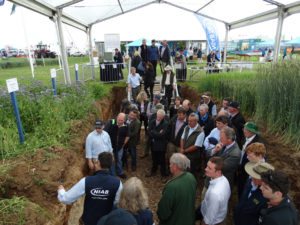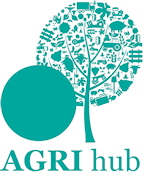 Soil health is becoming increasingly important to farmers, affecting crop vigour and yields, bio-diversity, and profitability. But it’s not often that arable producers get below ground level to really see what’s going on, which is why Cereals 2017 is enabling them to do just that.
Soil health is becoming increasingly important to farmers, affecting crop vigour and yields, bio-diversity, and profitability. But it’s not often that arable producers get below ground level to really see what’s going on, which is why Cereals 2017 is enabling them to do just that.
Last year’s event featured an 8m long x 1.5m deep soil pit, demonstrating the impact of different crops on soil structure. It attracted so much interest that this year’s feature will more than double in size to 20m long, with the addition of a new compacted area, to illustrate the impact of poor soil structure on rooting ability.
“Soil health is a really hot topic right now; there is a lively debate on how to best manage soil structure both with machinery and through crop choice,” says Ron Stobart, Head of Farming Systems Research at NIAB. “By drilling different crops with a variety of sowing dates and digging the soil pit just before the event, we can show farmers what’s really going on beneath the surface. With plenty of expert advice on hand this will enable them to make more informed decisions about their own soil management at home.”
This year’s crops will include winter and spring beans, wheat and oats, as well as cover crops like vetch, radish and a radish/oat mix. “Cover crops are an increasingly popular option to improve soil condition and reduce erosion,” explains Mr Stobart. “Last year visitors were surprised at how deep roots can go – up to 1.5m in Cambridgeshire’s chalky soils – but different cover crops have very distinct rooting habits so farmers should choose appropriate species to tackle specific needs in their soils.”
The soil pit will also have experts on site to discuss varying cultivation and tillage options, says Mr Stobart. “And visitors will be able to see the results of these different techniques used to alleviate compaction in the soil pit.”
Steve McGrath, Head of Sustainable Soil and Grassland Systems at Rothamsted Research, will be turning theory into practice, demonstrating how soil physics, worms and microbiology interact with the plants. “We do a lot of research into soil, so this is an ideal opportunity to show farmers what’s going on, with a living backdrop.”
Mark Tucker, Head of Agronomy at Yara, will also be taking samples throughout the soil profile, to illustrate the importance of measuring nutrients before choosing how – and where – to apply fertiliser. “About 50% of UK soils have an incorrect pH, which immediately compromises nutrient availability,” he says. “And nutrients can become stratified with minimum tillage techniques: Only by measuring your soils accurately can you make informed decisions to help long-term productivity.”
Poor soil health can reduce cereal yields by up to 60% – so the financial impact of better management can be significant, says Jon Day, Cereals Event organiser. “At Cereals we want to give farmers all the information they need to benefit their bottom line. Soil is absolutely vital to arable production, so keeping it in best possible health is the foundation of a productive, profitable and viable business.”




